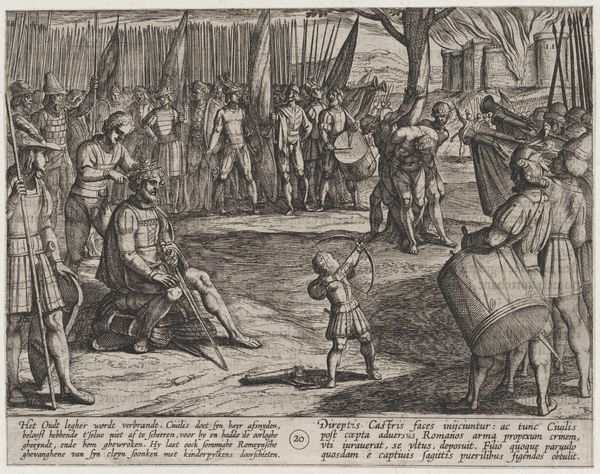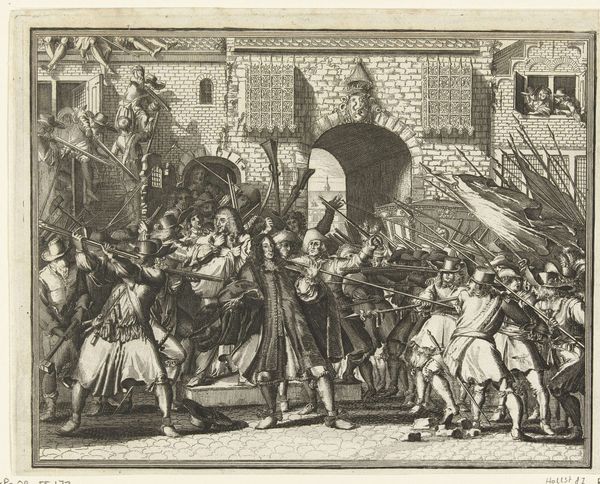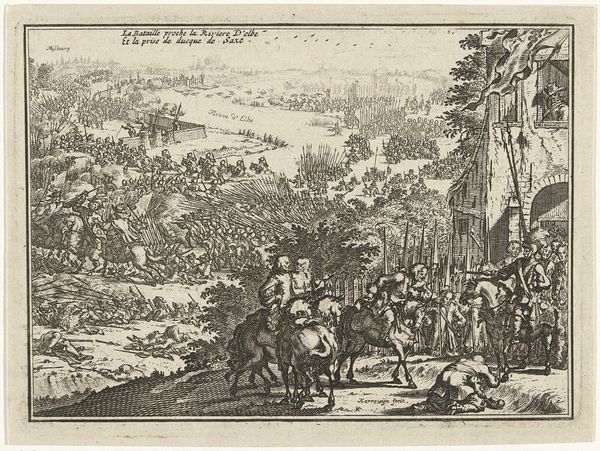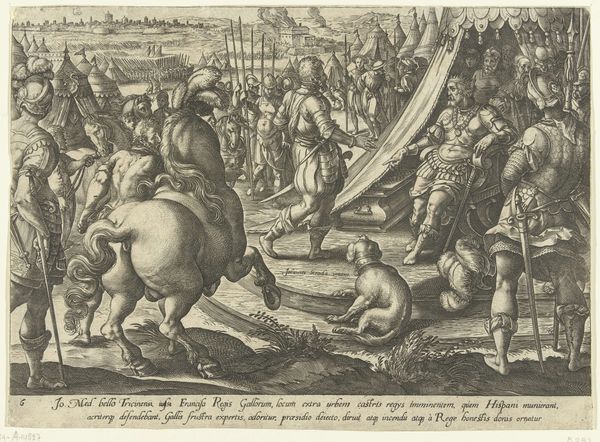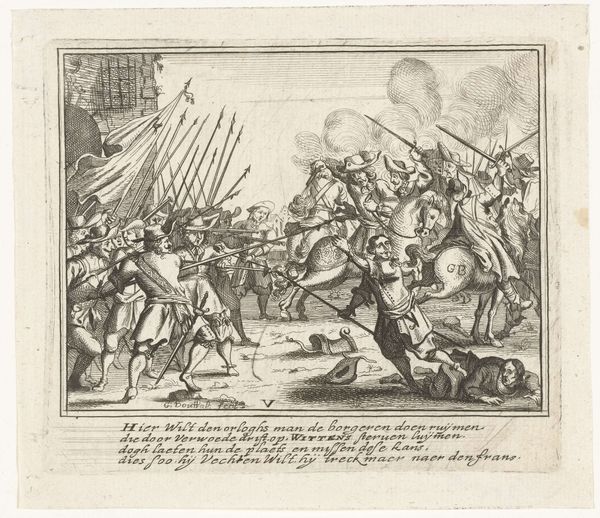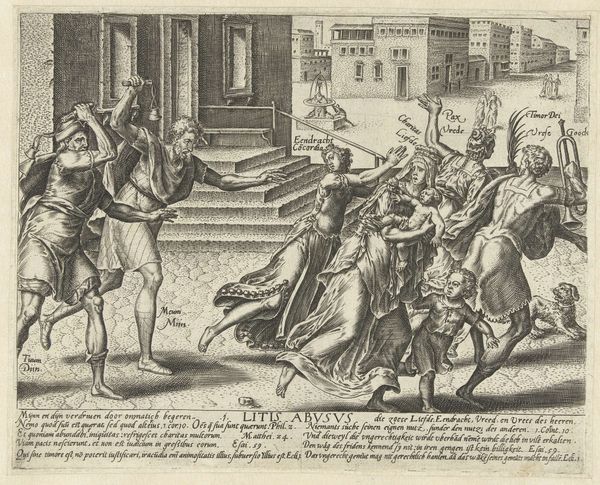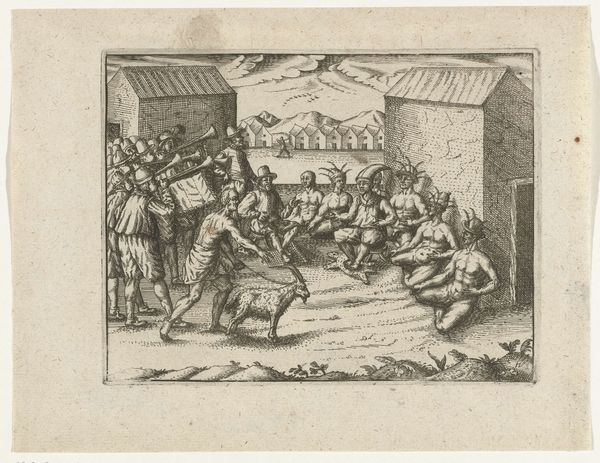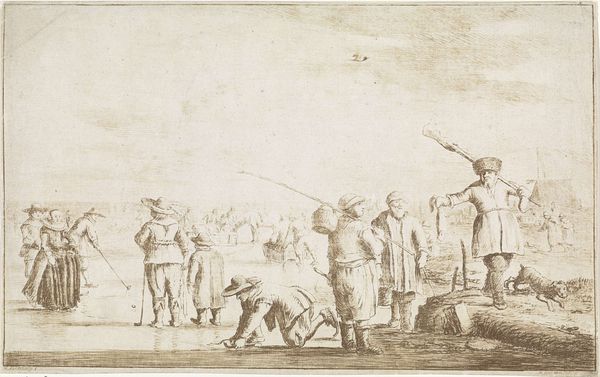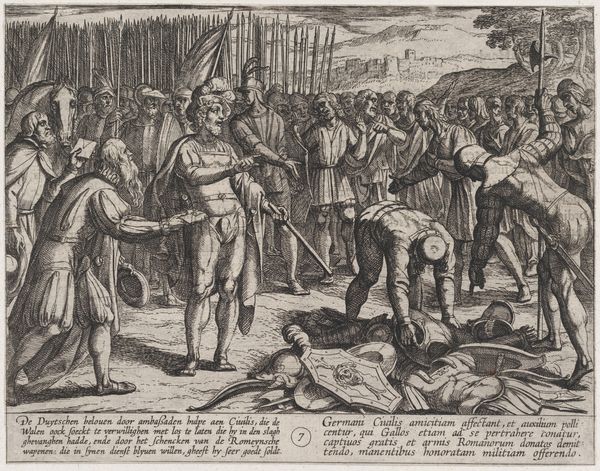
#
quirky sketch
#
pen sketch
#
personal sketchbook
#
sketchwork
#
ink drawing experimentation
#
pen-ink sketch
#
sketchbook drawing
#
storyboard and sketchbook work
#
sketchbook art
#
fantasy sketch
Dimensions: height 175 mm, width 209 mm
Copyright: Rijks Museum: Open Domain
Editor: Here we have Harmen ter Borch's "End of a Rabbit Hunt," likely from 1649. It’s a pen and ink sketch, almost like a snapshot of a chaotic scene. There's a raw, immediate quality to it that I find intriguing, like witnessing a moment in history. What are your initial thoughts on this work? Curator: Considering its materiality, this sketch is less about "high art" and more about process. The use of pen and ink, common and accessible materials, democratizes the image. Ter Borch isn’t working with precious pigments or labor-intensive techniques. It is about efficient capturing. How does this choice of media reflect broader social access to art making at this time? Editor: That's interesting. I hadn't considered the accessibility of the materials. So, its significance lies partly in the *how* and *what* of its production? Curator: Exactly. Think about the consumption of imagery during this period. Sketches like these weren't necessarily meant for display like a finished painting. They served as a record, perhaps a study for a larger work, or even personal amusement. It suggests an active participation in image creation and circulation, potentially expanding the audience beyond the elite. Do you see hints of class in this picture? How are people’s postures and body language influenced by societal class distinctions? Editor: Well, some figures seem to be observing, while others are actively involved in preparing the hunt's spoils. It gives a sense of different roles within society all brought together. I also noticed that ter Borch signed the artwork - I suppose it's to state ownership of invention and authorship, and maybe his pride too? Curator: Yes, you’ve highlighted critical observations. Recognizing these subtleties demonstrates an understanding of image-making as a cultural production deeply intertwined with societal values. By scrutinizing the sketch’s composition, ter Borch’s decision in choosing his supplies and making labor visible, you are starting to unravel these assumptions about this period. Editor: I hadn’t thought about art in quite this way before – seeing it as an intersection of materials, labour, and consumption. I am intrigued about exploring these topics further in more artworks. Curator: That’s wonderful to hear. Materiality offers an exciting new set of lenses to re-evaluate how artwork tells a different side of history.
Comments
No comments
Be the first to comment and join the conversation on the ultimate creative platform.
